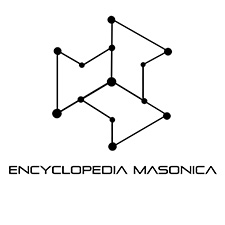
STEP
Encyclopedia Masonica
The Step can hardly be called a mode of recognition, although Apuleius informs us that there was a peculiar step in the Osiriac initiation which was deemed a sign (see Sign). It is in Freemasonry rather an esoteric usage of the ritual. The steps can be traced back as far as to at least the middle of the eighteenth century, in the rituals of which they are described The custom of advancing in a peculiar manner and form, to some sacred place or elevated personage, has been preserved in the customs of all countries, especially among the Orientalists, who resort even to prostrations of the body when approaching the throne of the sovereign or the holy part of a religious edified.
The steps of Freemasonry are symbolic of respect and veneration for the altar, whence Masonic light is to emanate. In former times, and ho some of the advanced and other Degrees in various parts of the world, a bier or coffin was placed in front of the altar, as a well-known symbol, and in passing over this to reach the altar, those various positions of the feet were necessarily taken which constitute the proper mode of advancing. Respect was thus necessarily paid to the memory of a worthy artist as well as to the holy altar.
Brother Lenning says of the steps—which the German Masons call die Schritte der Aufzunehmenden meaning the steps of the recipients, and the French, les pas Mysterieux, the mysterious steps—that "every degree has a different number, which are made in a different way, and have an allegorical meaning." Of the "allegorical meaning" of those in the Third Degree, we have spoken above as explicitly as would be proper. Gädicke says: "The three grand steps symbolically lead from this life to the source of all knowledge." It must be evident to every Master Mason, without further explanation, that the three steps are taken from the place of darkness to the place of light, either figuratively or really over a eosins the symbol of death, to teach symbolically that the passage from the darkness and ignorance of this life is through death to the light and knowledge of the eternal life. And this, from the earliest times, was the true symbolism of the step.
